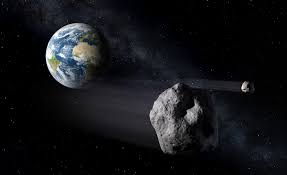Nasa’s Jet Propulsion Laboratory (JPL) has been successful in tracking the 1000th Near-Earth Asteroids (NAE). Its radar picked up 2021 PJ1 as it passed the distance of just 1.7 million kilometers from earth.
The scientist said that the asteroids do not pose a threat to the planet. Its remote size initially made it difficult for tracking. The initial radar observation showed it to be between 65 and 100 feet wide. Despite it being of very small size the asteroids managed to get their name recorded in history. It books as the 1000th near-earth object to cross the planet. Seven days later, JPL picked up the 1001 st object as it came to earth. This time it was larger than before. Dubbed 20216 AJ193, it passed our planet at a distance of about 3.4 million kilometers.
Radar tracks NEOs
“2021 PJ1 as compared to the other asteroids is quite smaller, so it passed the earth at a distance of over a million miles. The scientist could not obtain detailed imagery. Yet even being at such a distance, our planetary radar is powerful enough to detect it and measure its velocity to very high precision. Which will improve our knowledge of its future sustainability,” Lance Benner said in a statement. He is the one who leads Nasa’s asteroids radar research program.
The detection of these fast-moving objects with the help of radar first started in the year 1968. It helps astronomers understand the NEO orbit. It also provides data that can extend the calculations of future motion from decades to centuries. Helps definitely predict asteroid going to hit the Earth or not or if it is just going to pass close through it. The radar also helps the scientist provide critical information about size, shape, and spin rate. Whether or not it is accompanied by one or smaller moons.
At Arecibo Observatory in Puerto Rico half of these asteroids have been detected using the telescope. But it was damaged and decommissioned in the year 2020. About fourteen NEAs have been observed using antennas. At the Deep Space Network’s Canberra Deep Space Communication Complex. All it to transmit radio waves to the asteroids and the CSIRO’S Australian Telescope Compact Array and Parkes Observatory in South Wales to receive the radar reflection.

Why are tracking all this hard?
Three-quarters of all NEA radar observations have been made since Nasa’s NEO Observations Program. Now, this is a part of the Planetary Defence Program and it saw an increase in funding. This agency monitors the vast reaches of the ecosmos using satellites, and ground-based telescopes, observing if any objects threaten the planets or its assets hovering above it. Astronomers also use the 70 – meters (230-foot) Deep Space Station 14 (DSS-14) antenna at the Deep Space Network to transmit radio waves to the asteroids and receive the radar reflections or echoes. “Reaching this milestone of now just over 1,000 radar detections of NEAs emphasizes the important contribution that has been made in characterizing this hazardous population, which is fundamental for our planetary defense efforts,” Kelly Fast, NEO Observation Program Manager said.


